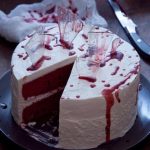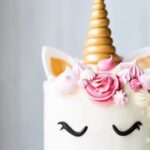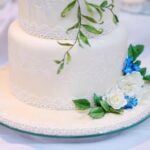Royal icing is a versatile and essential component in the world of cake decorating, providing a smooth and professional finish to cakes, cookies, and other confections. In this article, we will delve into how to mix royal icing for cake decorating, making your creations truly stand out.
Crafted from a blend of confectioners’ sugar, water, and egg whites or meringue powder, royal icing is known for its hardening properties once set. This makes it ideal for intricate designs like piping flowers, borders, lettering, and even creating three-dimensional decorations on cakes.
Understanding the key ingredients needed to make royal icing is crucial for achieving the perfect consistency and texture. Additionally, having the right equipment on hand ensures a smooth mixing process and seamless application onto your baked goods. With our step-by-step instructions and troubleshooting tips, you’ll be well-equipped to tackle any challenges that may arise during the mixing process.
The Ingredients You Need
Royal icing is a versatile and essential component in cake decorating, known for its smooth finish and ability to hold intricate designs. The key ingredients needed to make royal icing are simple and easy to find in most kitchens. To prepare this icing, you will need confectioners’ sugar (also known as powdered sugar), meringue powder or egg whites, and water.
Confectioners’ Sugar
This is the main ingredient in royal icing and provides sweetness and consistency to the mixture. It is important to use confectioners’ sugar instead of granulated sugar as it dissolves easily when mixed with other ingredients. Make sure to sift the confectioners’ sugar to avoid lumps in your royal icing.
Meringue Powder or Egg Whites
Meringue powder is a convenient option for making royal icing as it eliminates the need for separating eggs. However, if you prefer using fresh ingredients, you can use pasteurized egg whites instead. Both options work well in creating stable royal icing that sets firmly for decorating cakes.
Water
Water is used to adjust the consistency of royal icing based on the specific decoration technique you are using. Adding water gradually allows you to control how thick or thin your icing will be. Remember that a thicker consistency is ideal for outlining while a thinner consistency is better suited for flooding or filling in designs on cakes.
By having these key ingredients on hand and following proper measurements and mixing techniques, you can create beautiful designs on your cakes using royal icing. Experiment with different consistencies, colors, and flavors to enhance your cake decorating skills and impress your family and friends with stunning creations.
Equipment Needed
When it comes to mixing royal icing for cake decorating, having the right tools and equipment can make all the difference in achieving the perfect consistency and texture. Here is a list of essential kitchen tools and equipment you will need to successfully mix royal icing:
Stand Mixer or Hand Mixer
One of the most important tools you will need when making royal icing is a stand mixer or a hand mixer. Mixing royal icing by hand can be quite labor-intensive, so using a mixer will make the process much easier and faster. Make sure your mixer has different speed settings to adjust the mixing intensity based on the recipe requirements.
Bowl and Spatula
You will need a clean, dry bowl for mixing your royal icing ingredients. A medium-sized mixing bowl works well for most recipes. Additionally, having a spatula on hand is essential for scraping down the sides of the bowl as you mix to ensure all ingredients are well incorporated.
Piping Bags and Tips
If you plan on using royal icing for intricate cake decorating designs, piping bags and tips are necessary. Piping bags allow you to easily control the flow of icing, while different tips create various shapes and patterns. Make sure to have a variety of tip sizes on hand to achieve different design elements in your decorations.
Having these essential kitchen tools and equipment readily available will ensure that you are prepared to mix royal icing for cake decorating success. By following the step-by-step instructions coupled with these key items, you will be well-equipped to create beautifully decorated cakes that are sure to impress.
Step-by-Step Instructions
Royal icing is an essential element in cake decorating, providing a smooth and elegant finish to cakes and pastries. Learning how to mix royal icing for cake decorating is crucial for achieving professional-looking results. The process involves combining simple ingredients such as confectioners’ sugar, egg whites or meringue powder, and water in precise measurements to create the perfect consistency for piping and flooding decorations on your baked goods.
To begin mixing royal icing for cake decorating, start by sifting the confectioners’ sugar to remove any lumps that may cause clumping in the mixture. This step is essential to ensure a smooth and uniform texture in your royal icing.
In a clean mixing bowl, combine the sifted confectioners’ sugar with either pasteurized egg whites or meringue powder, following the recipe’s specific measurements. The addition of water will help thin out the mixture to reach the desired consistency for different decorating techniques.
Once you have combined all the ingredients, use an electric mixer on low speed to gradually incorporate them together. Be careful not to overmix the royal icing as it may lead to air bubbles forming in the mixture, affecting the final appearance of your decorations.
Adjust the consistency by adding more water if needed for flooding or using less water for stiff peaks required for intricate piping work. Mastering these mixing techniques will elevate your cake decorating skills and bring your creations to life with beautifully crafted designs.
| Key Points | Importance |
|---|---|
| Sift confectioners’ sugar | Ensures smooth texture |
| Gradually combine ingredients | Avoids air bubbles in mixture |
| Adjust consistency as needed | For different decorating techniques |
Troubleshooting Tips
When it comes to mixing royal icing for cake decorating, there may be some common problems that could arise during the process. Understanding these issues and knowing how to troubleshoot them can help you achieve the perfect consistency and results for your cake decorations. Here are some troubleshooting tips to address these issues:
1. Royal Icing is Too Thin: If your royal icing turns out too thin and runny, this could be due to adding too much water or not mixing properly. To thicken it up, gradually add more sifted confectioners’ sugar until you reach the desired consistency. Make sure to mix slowly and consistently to avoid incorporating air bubbles.
2. Royal Icing is Too Thick: On the other hand, if your royal icing becomes too thick and stiff, it can be challenging to work with for intricate designs. To thin it out, add small amounts of water or clear extract (like lemon juice or corn syrup) until you reach a smoother consistency. Be cautious not to add too much liquid at once as it can quickly change the texture of the icing.
3. Air Bubbles in Royal Icing: Air bubbles can create an uneven surface when decorating with royal icing. To prevent air bubbles from forming, gently tap the bowl of icing on the counter before using it for decorating. Additionally, you can cover the surface of the icing with plastic wrap touching the surface to prevent air exposure while storing.
By understanding these common issues that may arise while mixing royal icing for cake decorating, you’ll be better equipped to troubleshoot them effectively and create beautifully decorated cakes every time. Remember to practice patience and precision when adjusting the consistency of your royal icing to achieve professional-looking results for your creations.
Different Consistencies for Different Techniques
Royal icing is a popular choice for cake decorating due to its smooth finish and versatility. One of the key factors in successfully using royal icing for decorating baked goods is achieving the right consistency. Different cake decorating techniques require different consistencies of royal icing, from outlining to flooding and intricate piped designs. Here is a guide on how to achieve the various consistencies needed for different cake decorating techniques:
- Outline Consistency: When you need to outline your design before filling it in, you want a thicker consistency of royal icing. To achieve this, start with your base royal icing recipe and add small amounts of water or liquid as needed until you reach a thick, pipeable consistency.
- Flood Consistency: For flooding larger areas on your cake or cookie, you’ll need a thinner consistency of royal icing that spreads easily without running off the sides. Add more water or liquid to your base royal icing until it reaches a slightly runnier consistency than the outline icing.
- Piping Consistency: When creating intricate designs like flowers or lettering with royal icing, a medium consistency is ideal. This allows the icing to hold its shape when piped but still flows smoothly off the piping tip. Adjust the amount of liquid added to achieve this balance.
Understanding and mastering the various consistencies of royal icing will elevate your cake decorating skills and allow you to create beautiful designs with precision. Practice mixing different consistencies according to your specific decorative needs and experiment with various techniques to see what works best for your creations. With time and experience, you will become more confident in using royal icing for all your cake decoration projects.
Coloring and Flavors
When it comes to decorating cakes with royal icing, adding color and flavor can take your creations to the next level. Whether you’re looking to achieve a vibrant rainbow effect or infuse your designs with delicious flavors, knowing how to properly color and flavor royal icing is key.
To add color to your royal icing, the best option is using gel food coloring. Gel colors are more concentrated than liquid ones, which means you’ll achieve richer hues without altering the consistency of your icing. Start by adding a small amount of gel color at a time until you reach the desired shade.
If you want pastel colors, use less gel; for deeper shades, add more. Remember that royal icing tends to darken as it dries, so keep this in mind when choosing the color intensity.
Flavoring royal icing can also enhance the overall taste of your cake decorations. Common flavor options include vanilla extract, almond extract, citrus zest, or even specialty flavors like coconut or mint. When adding flavoring agents, do so sparingly at first and taste test before adjusting further.
Keep in mind that some extracts are more potent than others, so a little can go a long way. Experiment with different combinations to find what works best for your personal preferences and the theme of your cake design.
| Food Coloring Type | Effect on Royal Icing |
|---|---|
| Gel Food Coloring | Richer hues without altering consistency |
| Liquid Food Coloring | Weaker coloring effect and may affect consistency |
Storage and Shelf Life
Royal icing is an essential component in cake decorating, known for its versatility and ability to create intricate designs and decorations. Knowing how to mix royal icing for cake decorating is crucial for achieving professional-looking results. By understanding the ingredients needed, the equipment required, and following the step-by-step instructions, you can create beautifully decorated cakes that will impress any occasion.
Once you have successfully mixed your royal icing and decorated your cake, you may find yourself with leftover icing. Properly storing royal icing is key to maintaining its quality and usability for future projects. To store leftover royal icing, transfer it to an airtight container and cover the surface with plastic wrap directly touching the icing to prevent it from drying out. Store the container in a cool, dry place away from direct sunlight.
Additionally, it’s important to note that royal icing can be kept for future use for about 2 weeks when stored correctly. Before using any leftover royal icing, make sure to give it a good stir or re-whip it with a hand mixer to restore its original consistency. By following these storage recommendations, you can make the most out of your royal icing and continue creating stunning cake decorations whenever inspiration strikes.
Frequently Asked Questions
Can I Put Royal Icing Directly on a Cake?
Royal icing can be used to decorate cakes, but it is not typically spread directly on the surface of the cake like frosting. It is more commonly used for intricate decorations such as borders, flowers, and lettering.
How to Make Royal Icing Decorations for Cake?
Making royal icing decorations for a cake involves preparing the royal icing to the right consistency – it should be stiff enough to hold its shape when piped. Use piping bags fitted with various tips to create different designs, such as stars, swirls, or dots.
How Do You Mix Colors Into Royal Icing?
Mixing colors into royal icing requires gel food coloring since liquid food coloring can alter the consistency of the icing. Start by adding a small amount of gel color and mix it well until you achieve the desired shade. Add more color if needed, but do so gradually to avoid over-saturating the icing.

Welcome to my blog about home and family. This blog is a place where I will share my thoughts, ideas, and experiences related to these important topics. I am a stay-at-home mom with two young children. I hope you enjoy reading it! and may find some helpful tips and ideas that will make your home and family life even better!





